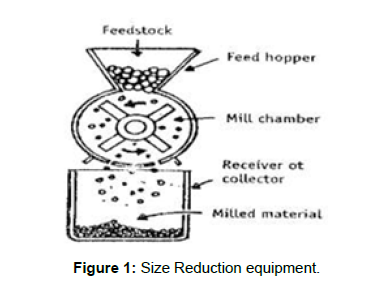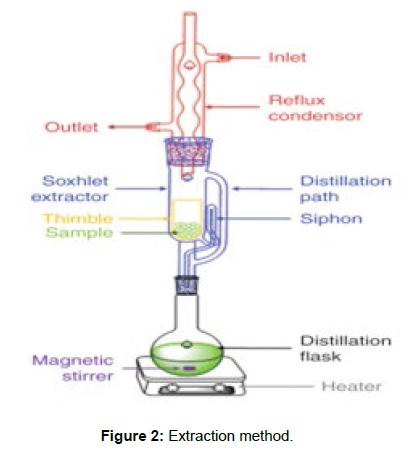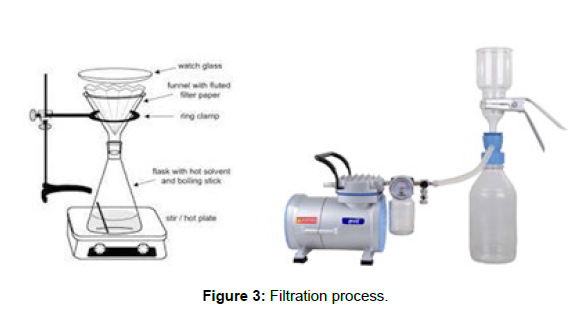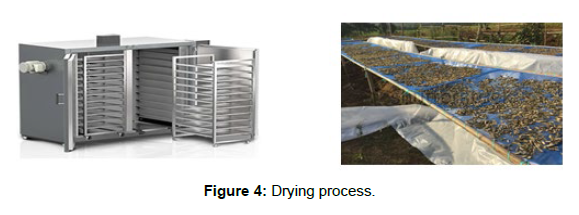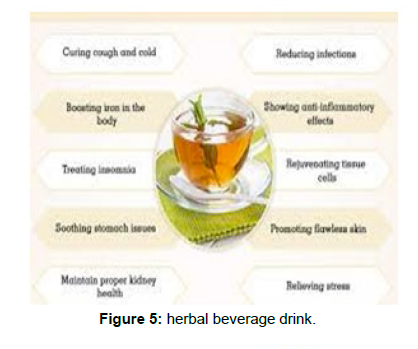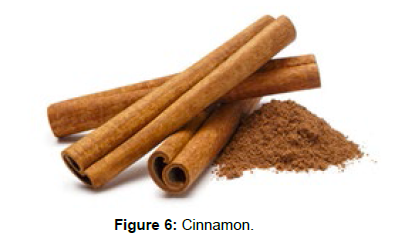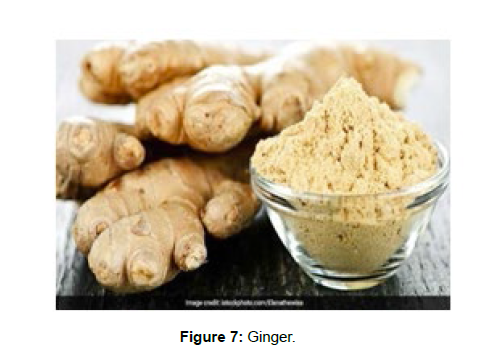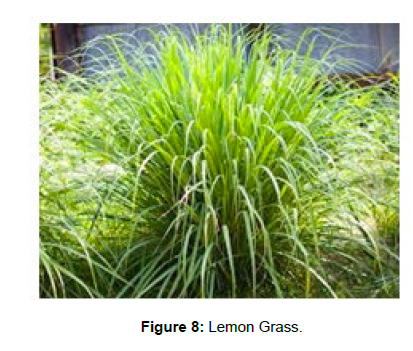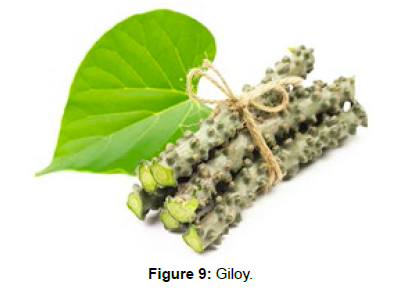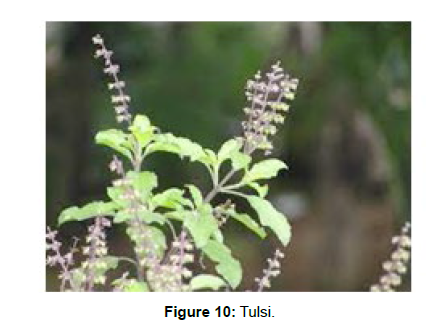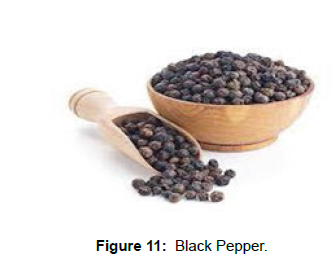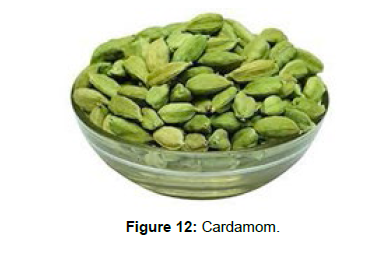Formulation & Assessment of Herbal Medicinal Beverage (Tea): A Review
Received: 27-Oct-2022 / Manuscript No. jham-22-78076 / Editor assigned: 31-Oct-2022 / PreQC No. jham-22-78076(pQ) / Reviewed: 14-Nov-2022 / QC No. jham-22-78076 / Revised: 21-Nov-2022 / Manuscript No. jham-22-78076(R) / Accepted Date: 21-Nov-2022 / Published Date: 28-Nov-2022 DOI: 10.4172/2573-4555.1000352 QI No. / jham-22-78076
Abstract
Herbal beverage is basically a mixture of diff types of medicinal plants parts which have medicinal value in it and have power had ability to cure the problem from root cause from where it is originated so that it will not create problem again in the body and body build the capacity to fight with the problem. The medicinal value of herbal beverage (mixture of herb) will help in fighting or relief from many diseases such as hypertension, diabetes, glowing skin,immunity booster it will increase defense ability of body which directly heals the body. The action of herbal beverage is slow but it can be for long time period.
Keywords
Herbal Tea; Antioxidants; Antiviral; Antibiotic; Immunity Booster
Introduction
Herbal beverage is a simply of basically a mixture of medicinal herb which is obtained from diff types of plants which medicinal value and shows the activity against the disease which is proven in the scientific study. Herbal beverage is also the best and healthy option to suppress or cure the disease from its root because it will lead to a healthy life for human beings. Herbal tea is very easy to make and taken easily with warm water it will make body hydrated and increase body metabolism [1].Herbal tea contains different type of herbs mainly cinnamon, giloy, tulsi, black pepper, ginger, cardamom, lemon grass etc [2].
Many types of herbal beverages can be prepared with the help of medicinal herbs. it can be single herb beverage or mixed drug beverage single drug beverage can be made with help of only one herb that can be prepared with help of collection of herbs, cleaning of herb, processing of herb and then storage of herb [3].
Mixed drug beverage can be prepared using different type of herb or more than one herb which is more beneficial than single herb beverage there are many methods to prepare herbal beverage some of them are of following [4-5].
Size Reduction
In this herb is taken in a mixer and grind for 10-20 min then the drug is sieved in a mesh size and desired size of particle is obtained for drug and it can be used acc to the formulation of tea [6-7] (Figure 1).
Extraction Method
It is usually carried in three ways: cold percolation, decoction, solvent extraction. cold percolation include extraction of drug with help of simple mixing of water with herbal drug in a tall column which is allowed to stand for next 24 hours and the excess of drug will be separated out and main extract is separated out and in hot (Decoction) the drug is mixed with plenty of water but external heat is provided which will enhance the process and the pure form of drug was separated out this technique is used basically for extraction of drug which have high extractive value. Solvent extraction in this technique extraction of herb is done with soxhlet apparatus in which drug and solvent is mixed and through distillation process pure form of drug is obtained out [8-9] (Figure 2).
Filtration
It is basically a process of removing the impurities and remove the extra things present in the sample which we are using to make the final product the method involved in filling the process are many types but most frequently used are simple filtration & vacuum filtration in simple filtration we simply we filter material with Whatman filter which fitted in funnel. And in vacuum filtration is done with the help of vacuum in this material is filled in cone shaped which is connected with a narrow portion which contain filter and connected with motor which create vacuum which further connected with outlet portion which narrow and filtrate sample was collected in a beaker or flask, which make process fast and safe the product obtained is pure form [10] (Figure 3).
Drying
It is basically a process of making the material in the solid form which can used in making the product easily it also help in preservation of drug & protect drug from degradation it can be done by following ways but only some techniques are popular for drying (tray drying, direct sun drying, lyophilisation in tray drying) is used basically for drying the solid drug in this the drug part is putting in the tray and tray is putted in a chamber and heat is provided in controlled manner and in direct sun drying in this the drug is placed in jar or container is putted directly in sun by which drug is dried in presence of light & in lyophilisation the liquid form of drug are dried to powder form in this liquid are putted in the lyophilisation equipment in which heat is provided then cold condition is provided by which drug become sold form [11] ( Figure 4).
From the above different methods different types of herbal products but we mainly focus on the herbal tea the herbal tea made from this methods are mainly two types of single herb tea & multiple herb tea some examples are single herb tea (example) [11].
Tulsi tea : in this pure leaf of Tulsi is taken and they are dried in sunlight & grind to fine powder and packed in specialized packing second way is to make extract of Tulsi leaf and dry it and then packed [12].
Ginger tea: in this fruit of ginger is taken and dried in sunlight and then it is grind to a fine powder with help of mixer / grinder and packed [13].
Giloy tea : in this pure leaf giloy is taken and properly dried in a sunlight and then dried to a fine powder and then sieved and packed in a special packing [9].
Cinnamon tea : in this bark of cinnamon is taken and properly dried in sunlight and then dried to a fine powder and then sieved and packed in a special packing [14].
Cardamom tea : in this seed of cardamom is taken properly dried in sunlight and then dried to a fine powder and then sieved and packed in a special packing [14].
Lemon grass tea: in this leaf of lemon grass taken properly dried in sunlight and then dried to a fine powder and then sieved and packed in a special packing [15-16].
Mixed herb tea (examples)
Tulsi & ginger tea: in this both the drug are separately taken and the dried in sunlight and then powder separately and then mixed properly in an accurate quantity then packed properly [17].
Giloy & cinnamon tea: in this both the drug are separately taken and the dried in sunlight and then powder separately and then mixed properly in an accurate quantity then packed properly [18].
Cardamom & lemon grass tea: in this both the drug are separately taken and the dried in sunlight and then powder separately and then mixed properly in an accurate quantity then packed properly [19].
Benefits of herbal beverage drinking
Herbal beverages are specialized drinks which contain specialized type phytoconstituent switches that help in curing many diseases and help boost the immunity power of the body. According to some scientific study on herbal tea and herbal drug it shows that herbal tea contain lot amount of Vit C & and contain large amount of sodium, potassium, calcium which help in proving extra nutrition to the body and Vit C help in boosting the immunity of body other than this herbal tea captain constituent which will enhance body power for curing many disease and prevention of disease from becoming chronic some of example of evidence of herb tea activity are herbal tea in prevention & treatment of cold and cough herbal tea ingredient such as ginger & cinnamon contain special constituent which destroy the viral infection causing virus and constituent which enhance body immunity and virus is degraded by body immunity [20].
In other ways herbal tea also help in absorption of calcium in the body it contain some constituent of iron which will enhance the absorption of calcium in body which make the bone, teeth, muscle stronger, or it also help in improving the immunity or immune system of body which because of antioxidant property of herbal tea ingredients such as ginger, cinnamon, giloy.
It is also used in detoxification of the body which removes all harmful elements because of the antioxidant property of herb used in it or it also helps in overcoming respiratory problems with help of cinnamon, cardamom, garlic which will act as expectorant and prevent problems. it also help in prevention of hypertension with help of ginger, garlic it maintain the blood pressure and activity of heart which maintain the blood pressure, it also prevent the diabetes with the help of Neem and betel leaf which increase the activity of pancreatic gland (beta cell) and also increase the production of insulin in body. It also helps in lowering the aging process with help of aloe vera which act as cleaning agent [18] (Figure 5).
Material & Method
Materials
Cinnamon
Cinnamon is most common drug used in making of single herb tea or mixed herbal tea it obtained from plant Cinnamomum zeylanicum and it bark is used in making herbal tea it is grown in proper condition and bark is taken and properly dried and it also used as spices in food which give special aroma to food. Cinnamon help in treatment of many diseases (Figure 6).
Benefits of cinnamon
In treatment of diabetes, in treatment of cholesterol, in treatment of irritable bowel syndrome, help in treatment of heart disease, help in treatment of cancer [12].
Side effects
• Irritation
• Allergies
• Vomiting
• Nausea [5]
Ginger
Ginger is an aromatic flavouring herb which is obtained from Zingiber officinale it rhizome part is used in the making the herbal tea and it is also used in making of herbal liquid (Kadhaa) it is best used as expectorant it also increase immunity of body (Figure 7).
Benefits
Help in boosting immunity,
Help in prevention of cancer,
Have antioxidant property anti-inflammatory agent,
Prevention from cardiovascular disease [12].
Side effects
• Heartburn
• Diarrhea
• Stomach discomfort [5].
Lemon Grass
It is a special type of plant which is used as flavouring agent which enhance the herbal tea aroma which make tea more prone to drink it is obtained from Cymbopogon flexuosus and it used as dried form or extract it is also called fever grass and a source of vitamin C which enhance immunity (Figure 8).
Benefits
• Flavouring agent
• Antifungal agent
• Use in soap& perfume industry [12]
Side effects
• Dried mouth
• Tiredness
• Dizziness
• Rashes [5]
Giloy
Giloy is a branch like plant which grows like branching in garden it is obtained from Tinospora cordifolia. It help in boosting the immunity, it used in form of extract and enhance the activity of herbal tea (Figure 9).
Benefits
• Enhances glow of skin
• Use in chronic fever
• Use in treatment of arthritis [12]
Side effects
• Jaundice
• Inflammation
• Appetite [5].
Tulsi
Is a plant which has highest medicinal values it is used in much herbal tea as key ingredients which will enhance the antiviral or antibacterial activity it obtained from Ocimum sanctum and it also used as antioxidant agent which enhance it antiviral activity (Figure10).
Benefits
• Antipyretic agent
• Anti-inflammatory activity
• Used in lowering blood glucose level [12].
Side effects
• Hypoglycaemia
• Kidney disfunction [5].
Black Pepper
It is a sour & aromatic, pungent taste and odor herb which is having many medicinal benefits it can be used to treat the sore throat & pain in neck also used in treatment of cold and cough it is obtained from Piper nigrum it taken with honey(Figure 11).
Benefits
• Used in treatment of cancer
• Used in arthritis, used in headache
• Used in weight loss.
Side effects
• Burning sensation in stomach
• Sore throat
• Sore mouth [5].
Cardamom
Cardamom is obtained from plant Elettaria cardamom in this the fruit part is used in herbal tea and other herbal formulation this herb is used in treatment of digestion related problem and also used in treatment of fatty liver (Figure 12).
Benefits
• Controlling blood pressure
• Enhance glow of skin
Side effects
• Constipation
• Diarrhea
• Nausea inflammation [5].
Method of preparation
Procedure
First take out the extract of drug like lemongrass, Gilroy, Cinnamon, dried ginger and pass it sieve to get good particle size. Then take mortar & pestle and mix all powder ingredients well and then mix well with extract. Then dry the sample and then evaluate it and then record evaluation parameter [16] (Table 1).
| Sr. No. | Name of drug | Quantity | Category |
|---|---|---|---|
| 1 | Cinnamon | 100 gm | Powder |
| 2 | Dried ginger | 50 gm | Powder |
| 3 | Lemon grass | 30 ml | Extract |
| 4 | Giloy | 50ml | Extract |
| 5 | Tulsi | 100 gm | Powder |
| 6 | Black pepper | 50 gm | Powder |
| 7 | Cardamom | 90 gm | Powder |
Table1: Formulation Table. Note: All powder drug used in preparation must be properly grind and sieved First take out the extract of drug like lemongrass & Gilroy.
Evaluation parameters
Ash Value
In this sample was taken and weighed accurately in a weight box and put into muffle furnace and the reading was checked according to their time and temp and weight of residue was also calculated accordingly (Table 2).
| Sl. No. | Time / Temp. | Ash value |
|---|---|---|
| 1 | 15 min/100c | 3.9 gm |
| 2 | 20 min/ 200c | 4.0gm |
| 3 | 25 min/300c | 5.2gm |
| 4 | 30 min/400c | 6.1gm |
| 5 | 35 min /500c | 6.5gm |
Table 2: Ash value.
Extractive value
Take an accurately weighed amount of sample and macerated with a hundred cubic centimetre of chloroform water during a closed flask for twenty-four hours, shaking of times throughout six hours and permitting standing for eighteen hours. Filter the extract and avoid the loss of solvent. twenty five cubic centimetre of the filtrate was taken and gaseous to status during a tarred vessel at 105°C, to constant weight and weighed the proportion of soluble extractive was calculated [18] (Table 3).
| Sl. No. | Time | Extractive values |
|---|---|---|
| 1 | 5 min | 10.1 |
| 2 | 10 min | 11.3 |
| 3 | 15 min | 12.4 |
| 4 | 20 min | 15.1 |
| 5 | 30 min | 16.4 |
Table 3: Extractive value.
Loss on Drying
It is the loss of weight expressed at least w/w ensuing from water and volatile matter are often driven off below such conditions. Weigh regarding two metric weight units of the dry crude drug during a dried and tarred flat advice dish. Dry in a hot air oven at 100c. Cool in desiccators over phosphorus oxide for a specific amount of your time. The loss in weight is recorded as wetness. Repeat the method until constant weight is obtained [20] (Table 4).
| Quantity | Temp / time | Loss of drying |
|---|---|---|
| 1 | 100/5 min | 100-99 gm |
| 2 | 100/10 min | 99-96gm |
| 3 | 100/15 min | 96-91gm |
| 4 | 100/20 min | 91-88gm |
| 5 | 100/25 min | 88-80 gm |
Table 4: Loss on Drying.
Flow Rate
Flow rate is outlined because of the flow property of a substance. First sample was taken and weighed properly and allowed to flow type the funnel and slat area unit for diff fundamental quantity [19] (Table 5).
| Quantity | Sample taken | Filtrate |
|---|---|---|
| 10ml | 10ml | 5ml |
| 20ml | 20ml | 10ml |
| 30ml | 30ml | 15ml |
| 40ml | 40ml | 20ml |
| 50ml | 50ml | 25ml |
Table 5: Flow Rate.
Conclusion
From the above study and conclusion it is studied that herb which are used in the making of herbal beverage are very useful and can be used in multiple disease and also used in making of all other formulation of herbal medicine and side effect of herb are also studied which help in studying of herbal interaction which help in making the product free from any bad interaction and also prevent drug - drug interaction. from all this the formulation of product is also easier and in this evaluation parameter of herbal beverage are also studies which help in testing the storage and degradation of herb [15].
References
- Calder PC, Carding SR, Christopher G, Kuh D, Langley-Evans SC, et al. (2018) A holistic approach to healthy ageing: how can people live longer, healthier lives. J Hum Nutr Diet 31: 439-450.
- Lachat C, Raneri JE, Smith KW, Kolsteren P, Van Damme P, et al. (2018) Dietary species richness as a measure of food biodiversity and nutritional quality of diets. Proc Natl Acad Sci 115: 127-132.
- Kromhout D, Spaaij CJK, De Goede J, Weggemans RM (2015) The 2015 Dutch food-based dietary guidelines. Eur J Clin Nutr 70: 869-878.
- Suzuki Y, Miyoshi N, Isemura M (2012) Health-promoting effects of green tea. Proc Jpn Acad Ser B 88: 88-101.
- Tandon N, Yadav SS (2017) Contributions of Indian Council of Medical Research (ICMR) in the area of medicinal plants/traditional medicine. Ethnopharmacol 197: 39-45.
- Ritch-Krc EM, Thomas S, Turner NJ, Towers GHN (1996) Carrier herbal medicine: traditional and contemporary plant use. J Ethnopharmacol 52: 85-94.
- World Health Organisation (2013) WHO traditional medicine strategy 2014–2023. World Health Organization.
- Zhang AL, Xue CC, Fong HHS (2011) Integration of herbal medicine into evidence-based clinical practice. In: Benzie IFF, Wachtel-Galor S (eds) Herbal Medicine: biomolecular and clinical aspects, 2nd edn. CRC Press, Taylor Francis.
- Das S, de Oliveira LM, da Silva E, Liu Y, Ma LQ (2017) Fluoride concentrations in traditional and herbal teas: health risk assessment. Environ Pollut 231: 779-784.
- Black C, Haughey SA, Chevallier OP, Galvin-King P, Elliott CT (2016) A comprehensive strategy to detect the fraudulent adulteration of herbs: the oregano approach. Food Chem 210: 551-557.
- Tricco AC, Lillie E, Zarin W, O’Brien K, Colquhoun H, et al. (2016) A scoping review on the conduct and reporting of scoping reviews. BMC Med Res Methodol 16: 15.
- Narahari SR, Aggithaya MG, Suraj KR (2010) A protocol for systematic reviews of Ayurveda treatments. Int J Ayurveda Research 1: 205-209.
- Mozaffari-Khosravi H, Jalali-Khanabadi BA, Afkhami-Ardekani M, Fatehi F, Noori-Shadkam M (2009) The effects of sour tea (Hibiscus sabdariffa) on hypertension in patients with type II diabetes. J Hum Hypertens 23: 48–54.
- Riza E, Linos A, Petralias A, de Martinis L, Duntas L, et al. (2015) The effect of Greek herbal tea consumption on thyroid cancer: a case-control study. Euro J Public Health 25: 1001–1005.
- Colapinto CK, Arbuckle TE, Dubois L, Fraser W (2016) Is there a relationship between tea intake and maternal whole blood heavy metal concentrations. J Expo Sci Environ Epidemiol 26: 503–509.
- Alferink LJ, Fittipaldi J, Kiefte-de Jong JC, Taimr P, Hansen BE, et al. (2017) Coffee and herbal tea consumption is associated with lower liver stiffness in the general population: the Rotterdam study. J Hepatol 67: 339–348.
- Gertsch J (2016) The metabolic plant feedback hypothesis: how plant secondary metabolites nonspecifically impact human health. Planta Med 82: 920–929.
- Pengelly A (2004) The constituents of medicinal plants: an introduction to the chemistry and therapeutics of herbal medicine. CABI Publishing 1: 207-210.
- Guimaraes R, Barros L, Carvalho AM, Ferreira IC (2011) Infusions and decoctions of mixed herbs used in folk medicine: synergism in antioxidant potential. Phytother Res 25: 1209–1214.
- Yin SY, Wei WC, Jian FY, Yang NS (2013) Therapeutic applications of herbal medicines for cancer patients. Evid-Based Complement Alternat Med 2013: 302426.
Indexed at , Google Scholar, Crossref
Indexed at , Google Scholar, Crossref
Indexed at , Google Scholar, Crossref
Indexed at , Google Scholar, Crossref
Indexed at , Google Scholar, Crossref
Indexed at , Google Scholar, Crossref
Indexed at, Google Scholar, Crossref
Indexed at , Google Scholar, Crossref
Indexed at , Google Scholar , Crossref
Indexed at , Google Scholar, Crossref
Indexed at , Google Scholar, Crossref
Indexed at , Google Scholar, Crossref
Indexed at , Google Scholar, Crossref
Indexed at , Google Scholar, Crossref
Indexed at , Google Scholar, Crossref
Indexed at , Google Scholar, Crossref
Citation: Shukla K (2022) Formulation & Assessment of Herbal Medicinal Beverage (Tea): A Review. J Tradit Med Clin Natur, 11: 352. DOI: 10.4172/2573-4555.1000352
Copyright: © 2022 Shukla K. This is an open-access article distributed under the terms of the Creative Commons Attribution License, which permits unrestricted use, distribution, and reproduction in any medium, provided the original author and source are credited.
Select your language of interest to view the total content in your interested language
Share This Article
Recommended Journals
Open Access Journals
Article Tools
Article Usage
- Total views: 3050
- [From(publication date): 0-2022 - Jul 13, 2025]
- Breakdown by view type
- HTML page views: 2621
- PDF downloads: 429

